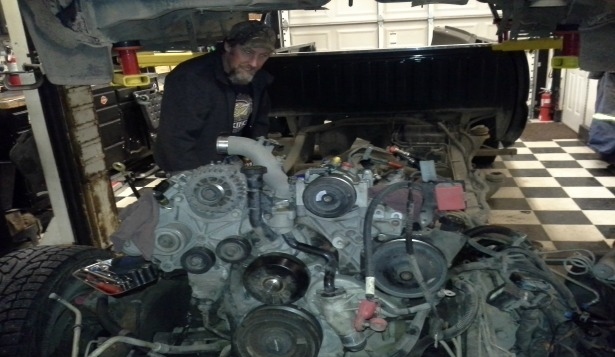I visited the shop of a friend of mine who I work with who was in the process of replacing the heads and injectors on a 2005 Chevy 2500 4X4 with a Duramax diesel engine. I’ve always heard you need to remove the cab to do any kind of major engine work so it was interesting to see what was involved with removing the complete cab assembly.
Steps Required to Remove The Cab From Chassis
There are 6 cab mounts including 2 at the front of the frame under the radiator. The shift linkage had to be removed from the transfer case along with the ground strap attached to the cab body.
The main fuse / relay power center and harness needs to be removed along with the master cylinder. The air conditioning system had to be evacuated and lines removed. The radiator and intercooler was left attached to the cab with hoses and connections removed.
Our Mechanic went to one of the GM dealerships and talked to the diesel tech there and he advised strapping the cab to the back side of the hoist to secure it. Since this model was an extended cab it was not necessary. The Mechanic at GM also said he had done so many of these engines he could do a head re and re without removing the cab in 16 to 18 hours. The dealership would charge out 25 hours.
The steering column intermediate shaft was disconnected and the master cylinder was removed as well. The inner fenders are also taken off for easier access to the top end. The reason for removing the heads was coolant leaking internally and there was also an external coolant leak.
About The Allison 1000 Series Transmission
The Silverado extended cab covered here comes with an Allison 1000 series transmission built to provide high towing capacity. Information I found online states the towing capacity is 9200 lbs with a ball hitch and 1200 lbs with a fifth wheel, 16000 lbs with a gooseneck. The 5 speed close ratio gearing allows for heavy loads and has the usual tow/haul operating modes. I love these transmissions because of the durability and variable torque levels they provide which meets any kind of load demand.
Thank you for checking out this post and I welcome any comments you have…enter them below.







